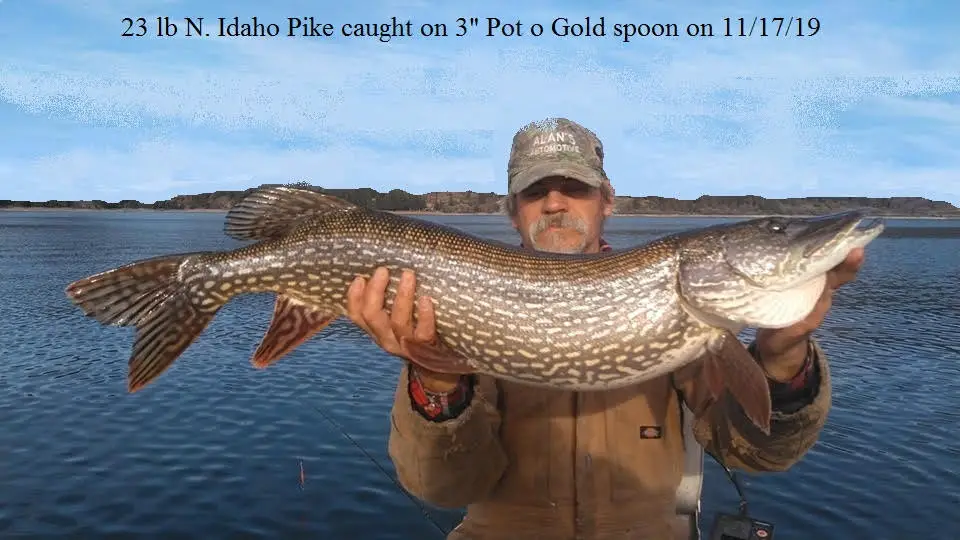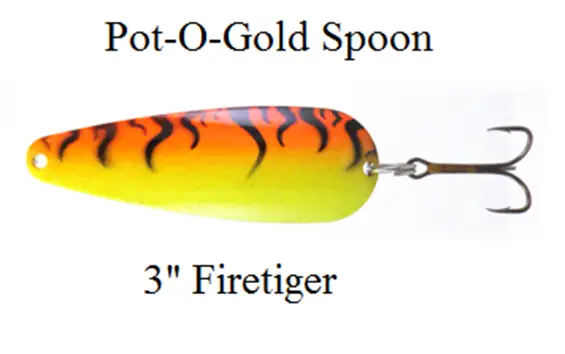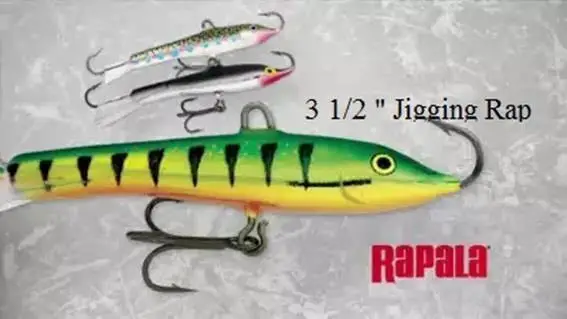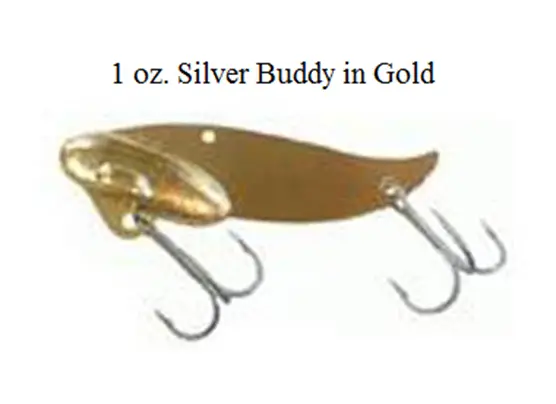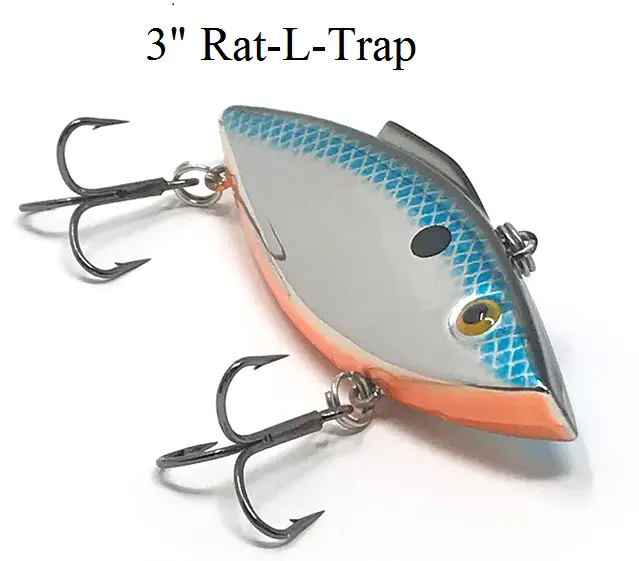Search
Latest Articles
Jigging Up Cold Water Pike
by Rick Lawrence, December 09, 2019
The truth is that pike never go on an extended hunger strike during the ice season. Pike are a cold water specie that must feed throughout the winter to prepare for the rigors of spring spawning. By understanding the dynamics of changing lake conditions in the colder months and how these changes affect pike, anglers can catch pike all winter long.
The key to catching winter pike like this 23 lb. fatty pictured I got a week ago jigging a 1 oz. Pot O Gold spoon is to find a good weed edge in 6 to 20 feet of water. Pike are ambush predators and love to have weed lines next to open water to dart out and grab a meal. So the target area is to fish the first 5 feet or so off the weed line in the open water. This is the general rule; however I have seen Pike that were wintering in 25 feet of water with just a sand bottom and no structure at all. Pike don’t like to travel far from their summer home to their winter home. In most cases it is less than a mile, so in some lakes the first deep water they get to off the summer hunts will be where they spend their winters at.
The Lures;
Remember back to summer when pike would hit about everything in sight, from big crankbait and spoons to flashy spinnerbaits and noisy topwater lures. Just about no matter what size or color the lure was it could provoke a strike at times. Just put the lure in front of a pike and many times their curious nature made them hit it. The nature of pike does not change once winter hits. Since ice fishing does not permit a conventional cast and retrieve approach, lure selection is limited to lures that can be fished vertically. These include spoons, Jigging Raps, lipless crankbaits and blade baits. However this method also extends to be able to fish open water out of a boat in the winter as well. When fishing out of a boat it opens up a few other methods also, like jigging a lure across the bottom rather than just straight up and down.
Spoons;
Spoons come in two basic varieties: light flutter spoons and heavy slab spoons. Flutter spoons are used in bass fishing a lot and are fairly easy to find on the internet, Some of the ones I like are the Walleye candy flutter spoons. Generally flutter spoons can be fish in very shallow water up to about 15 ft or so, in deep water I always use a slab type spoon like a Daredevil or Pot of gold spoon. Both types of spoons will flutter on the fall however and that is how I fish both types by letting it fall on a semi slack line then a quick lift and let it fall again. When fishing out of a boat I make a long cast and do the lift fall technique I watch my line on the water when I fish a spoon this way. Because if you see your line stop pulling across the water it’s either that the spoon hit bottom or a fish ate it. I add an extra treble hook to the front of a spoon that are larger than 5” when using the flutter fall as it really helps with getting a good hookup on fish that hit the front of the bait.
Jigging Raps;
A bait that is overlooked by most Bass and Pike anglers for winter fishing is the Rapala Jigging Rap. In the larger size this can be a very good winter pike lure, especially under the ice as it swims in a circle out away from you hole somewhat when jigged. These come in sizes up to 7/8 of an oz. which is 3 ½” long and are the perfect size for catching winter pike. The Jigging rap is a great lure I’ve been fishing a long time, mainly for panfish, but have really re-discovered using them over the past few years for Pike..
I think that has something to do with the way the lure aggressively swings, zips, and darts around, triggering reaction strikes from fish that get a great visual on the lure. Something that will help you unlock some great cadences is literally just studying it on an underwater camera. Learn what it takes to rock a bait back and forth, and specifically for the jigging rap, how to swim it in a circle. Practice those and know what the bait does so you can pull the camera up away from the bait so it won’t spook the fish later with fish on screen.
Keep in mind that it’s not summer, and a fish’s metabolism is not at the same rate either. Fish can be aggressive, but overall you won’t fish a jigging rap in the winter with the same amount of lift/swing that you would a warm water setup.
Lipless Crankbaits:
While bass fishing legend KVD may have never imaged as much, rattling crankbaits are a go to for winter pike. The sight, sound and vibration of this lure draws in curious pike from great distances. Even if pike are not actively feeding, the commotion made by this lure provokes strikes. Lures like the KVD ¾ oz. the Red Eye Shad by Strike King or Bill Lewis Rat-L-Trap they descend quickly and can be fished over deep water to cover a lot of territory. Start by allowing the lure to sink to the bottom and quickly lift the rod causing the bait to make a loud pronounced rattle and a tight wobbling vibration. Repeat several times with only a short pause in between rod sweeps. Next, retrieve a few feet of line and repeat the process until the lure nears the surface. Employ less and less aggressive jigging motions until a successful pattern is determined. This lure remains a prime choice to fish above the tops of weed flats and outside weed edges through the entire ice season. Pike hit the lure with abandon.
Blade Baits:
Some angler only associate blade baits with muddy water river fishing. However, baits like the 1 oz. Silver buddy are one of the most effect lures for pike through the ice. Blade baits shine in clear and slightly stained water conditions where color and vibration work to attract curious pike without the strong noise of a rattling bait. Blade blades should be fished with varying retrieves. Allow the lure to sit motionlessly between each new jigging motion. Although always curious, pike can be cautious at times and often wait for the lure to stay at rest for a moment before striking it.
To withstand the stress that large pike put on tackle and the abrasiveness of the ice, avoid using monofilament while jigging lures. Instead, use a braided line like a 20lb Suffix 832 with the diameter of six-pound test monofilament, can be loaded on a small spinning reel and allow plenty of line to land any size pike. To reduce bite offs from truly huge fish that take additional time to battle, 60 to 100 lb. fluorocarbon leaders are a necessity.
Jigging artificial lures allows one to cover more water, both shallow and deep in the same day. The wide range of visual, sound and vibration created by lures attracts pike from greater distances than live bait, and triggers their predatory nature even when pike are in a neutral or negative mood.
